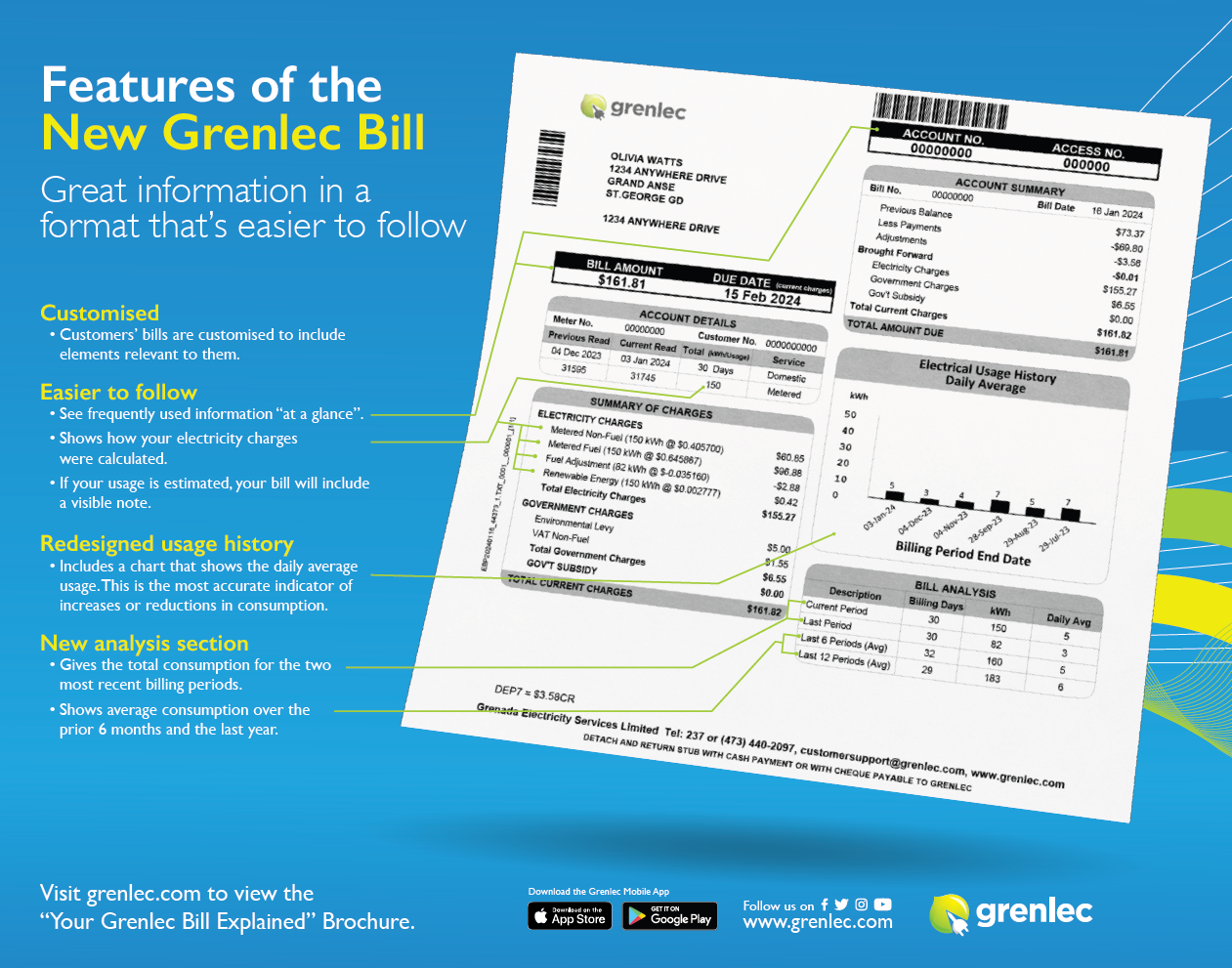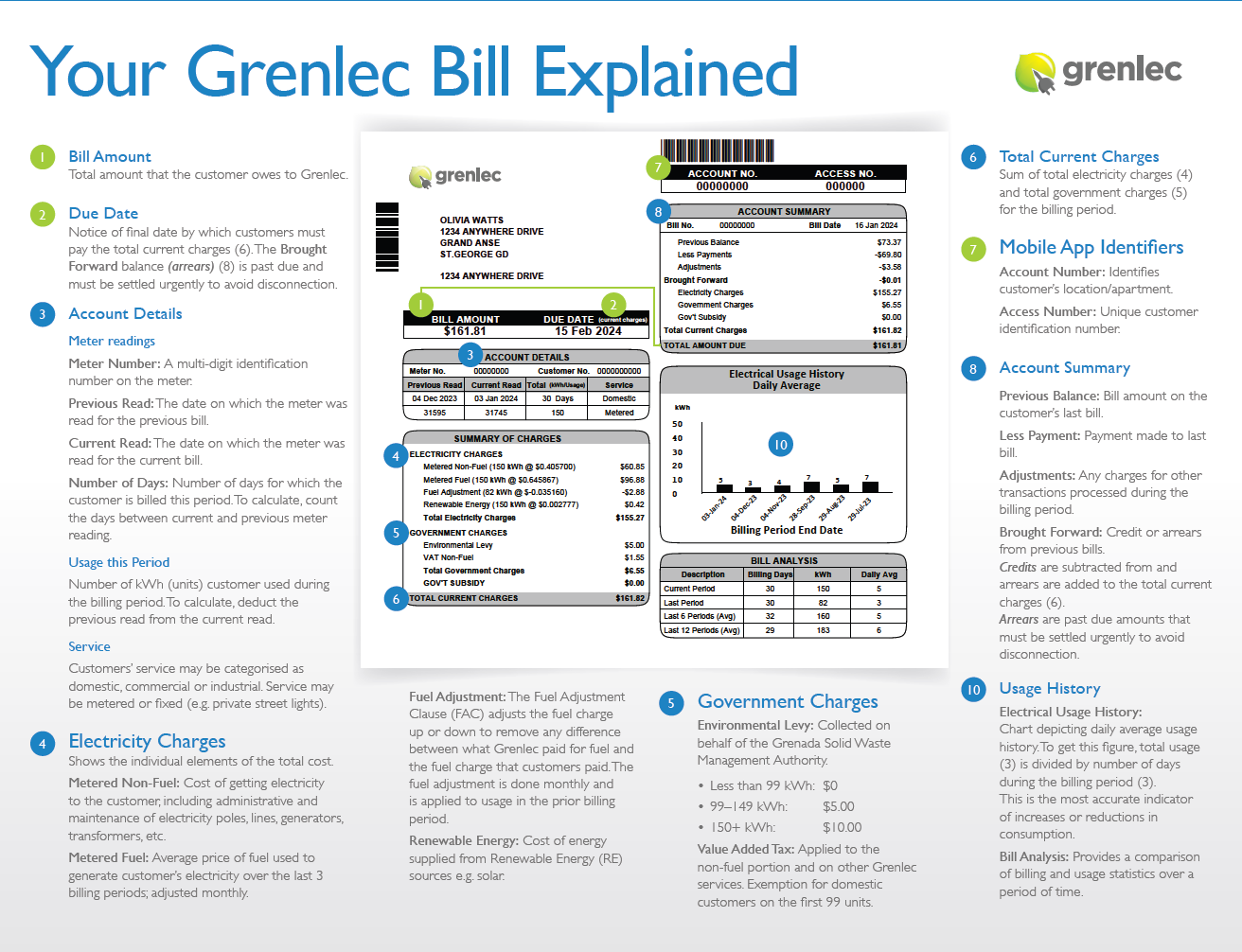The Public Utilities Regulatory Commission (PURC) has introduced two changes to the electricity billing structure (tariff):
- Renewable Energy Charge: Reflects the cost of electricity generated from renewable energy sources. This charge was implemented 1 October 2023.
- Fuel Adjustment Clause: Eliminates under or over-recovery of fuel costs by Grenlec by passing on the actual cost of fuel that Grenlec pays for fuel to its customers more promptly. The Fuel Adjustment Clause (FAC) was implemented on 1 November 2023.
The price of electricity will continue to vary based on customers’ energy consumption and world fuel market conditions.
Renewable Energy Charge – The Renewable Energy Charge further breaks down the bill to show the impact of renewable energy on customers’ bills in the same way that the impact of fossil fuel is shown as the fuel charge.
Fuel Adjustment Clause (FAC) – If the actual fuel costs paid by Grenlec are higher than what customers were charged in the prior billing period, customers will see an increase on their bill through the FAC. If, however, fuel costs paid by Grenlec were lower than what was charged to customers, customers will benefit from a decrease (credit) through the FAC.
Your electricity bill will continue to be comprised of Electricity charges + Government charges. Your Electricity charges will now include four components: Non-Fuel Charge, Fuel Charge, Fuel Adjustment Clause, and Renewable Energy Charge.
As renewable energy sources grow, we anticipate more stable and predictable electricity prices, contributing to a sustainable energy sector and a cleaner environment. Customers will see this impact reflected in the renewable energy charge on their bills.
Visit www.grenlec.com: Customers/Tools to Help You / Understanding Your Bill. Contact our customer service team for assistance by emailing customer support@grenlec.com or visit one of our Customer Care Centres.
The Fuel Adjustment Clause allows Grenlec to pass on the difference between the actual cost Grenlec paid for fuel and the fuel charge to customers in the prior billing period. It achieves this by doing an adjustment on the fuel charge in the next billing period. If the actual fuel costs were higher than what was charged, customers will see an increase through the FAC. Conversely, if fuel costs were lower than what was charged, customers will benefit from a decrease (credit) through the FAC.
Yes, they align with directives from the Public Utilities Regulatory Commission (PURC), which were Gazetted 1 September 2023. Under the Electricity Act, the PURC has responsibility for deciding the Tariff-setting methodology. Following consultations with stakeholders, these changes together with the other components of the electricity charges form an Interim Electricity Tariff.
Keep visiting our website, download the Grenlec Mobile App, follow our social media channels, or subscribe to the blog on our website for newsletters and updates.




